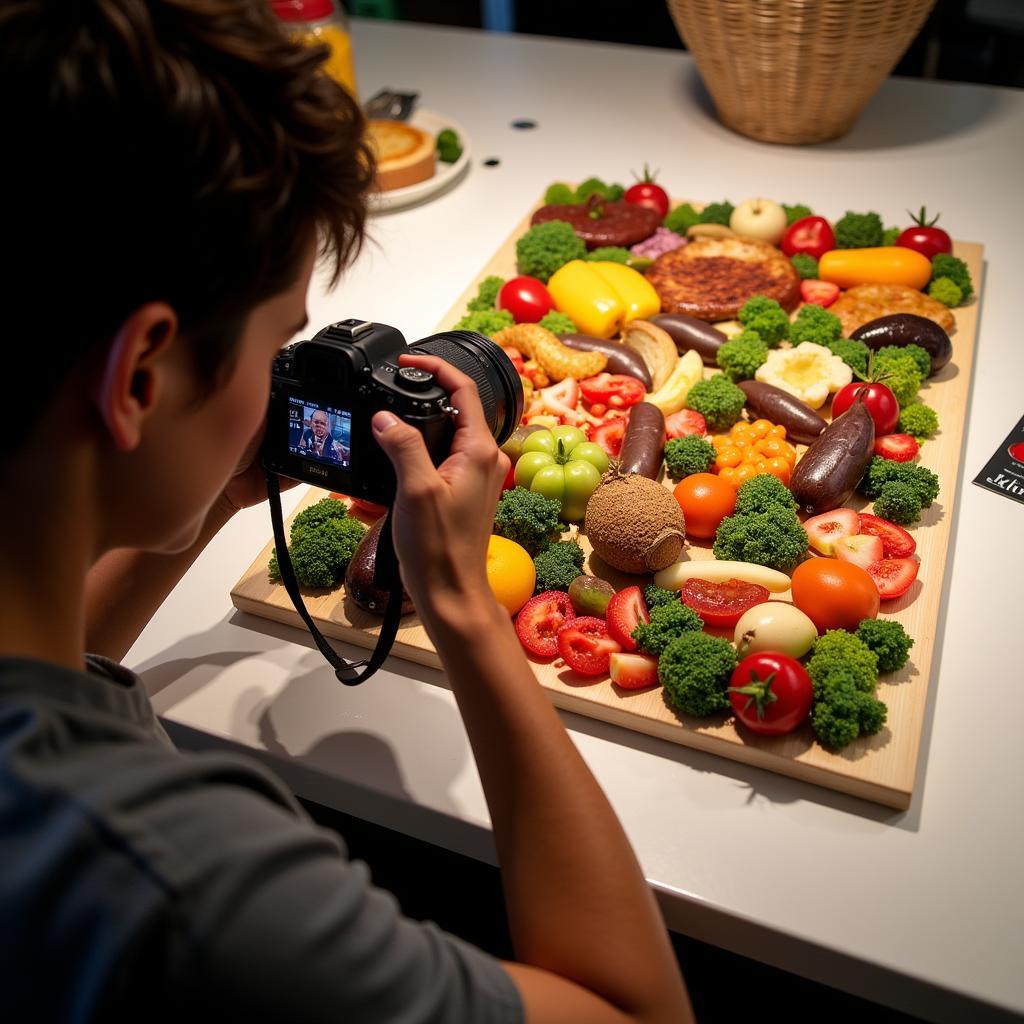Falling Apart Art: Exploring the Beauty of Deconstruction in Digital Creation
Falling Apart Art, also known as deconstructed art, has captured the imagination of digital artists and art enthusiasts alike. This unique style involves breaking down familiar forms and structures, often creating a sense of chaos and disintegration, yet simultaneously revealing a deeper, more intricate beauty. It invites us to question our perceptions of wholeness and perfection, and to find aesthetic value in the seemingly fragmented. Let’s delve into this fascinating world of digital art where destruction leads to creation.
Understanding the Allure of Falling Apart Art
Deconstructed art challenges the traditional notion of art as a representation of reality. Instead, it embraces fragmentation, distortion, and the breakdown of conventional forms. Think of it as a digital echo of Cubism or Surrealism, where familiar objects and scenes are fractured and reassembled in unexpected ways. This artistic approach allows for a greater exploration of abstract concepts, emotions, and the inner workings of the human psyche. It’s about taking something apart to understand its essence, revealing the hidden beauty within the fragments.
What makes falling apart art particularly compelling in the digital realm is the sheer range of possibilities it unlocks. Software and tools empower artists to manipulate images, textures, and forms with unprecedented precision, creating intricate and mesmerizing works that blur the lines between reality and abstraction.
Techniques and Tools for Creating Falling Apart Art
Digital artists employ a variety of techniques to achieve the falling apart effect. Some popular methods include:
- Shattering: Breaking an image into shards or fragments, often using 3D modeling software or image editing tools. This technique can create a sense of explosion or disintegration.
- Glitch Art: Introducing digital artifacts and distortions to an image, mimicking the visual effects of corrupted data. This approach adds a layer of unpredictability and raw energy to the artwork.
- Deconstructed Portraits: Breaking down facial features and reconstructing them in abstract ways, often emphasizing the emotional or psychological state of the subject.
- Abstract Decomposition: Transforming organic shapes and forms into abstract geometric patterns, exploring the interplay between order and chaos.
Software like Photoshop, Blender, and Cinema 4D are powerful tools for creating falling apart art. They provide a range of features for manipulating images, textures, and 3D models, allowing artists to experiment with different deconstruction techniques.
The Emotional Impact of Falling Apart Art
Falling apart art isn’t just about aesthetics; it’s also about evoking emotions and prompting reflection. The fragmented nature of these works can evoke a sense of vulnerability, loss, or the transient nature of existence. Conversely, it can also represent liberation, transformation, and the beauty of imperfection. The viewer is invited to interpret the fragmented pieces and construct their own meaning.
“Deconstruction in art is not about destruction, but about revelation,” says renowned digital artist Anya Sharma. “It’s about peeling back the layers to reveal the raw, unfiltered essence of the subject.”
Exploring Different Styles of Falling Apart Art
The beauty of falling apart art lies in its versatility. It can be applied to a wide range of subjects and styles, from abstract landscapes to surreal portraits. The choice of color palette, textures, and level of fragmentation can significantly impact the overall mood and message of the artwork. Experimenting with different techniques and styles is key to discovering your unique artistic voice within this genre.
Finding Inspiration for Your Own Falling Apart Art
Inspiration for falling apart art can be found everywhere, from the natural world to the urban landscape. Look for patterns of decay, erosion, or fragmentation in your surroundings. Consider the emotional impact of broken objects or fragmented memories. Explore the works of other digital artists who specialize in deconstruction.
“Don’t be afraid to experiment and push the boundaries,” advises digital art instructor, David Chen. “The beauty of digital art is that you can always undo, redo, and explore endless possibilities.”
Conclusion
Falling apart art offers a unique and powerful way to explore the beauty of imperfection and the emotional impact of fragmentation. By embracing digital tools and techniques, artists can create stunningly intricate and thought-provoking works that challenge our perceptions of art and reality. Explore the world of deconstructed art and discover the hidden beauty within the fragments.
FAQ
- What is falling apart art? Falling apart art, also known as deconstructed art, involves breaking down familiar forms and structures in art.
- What software is used for creating falling apart art? Popular software includes Photoshop, Blender, and Cinema 4D.
- What are some common techniques used in falling apart art? Shattering, glitch art, and deconstructed portraits are common techniques.
- Where can I find inspiration for falling apart art? Inspiration can be found in nature, urban landscapes, and the works of other digital artists.
- What is the emotional impact of falling apart art? It can evoke vulnerability, loss, liberation, and transformation.
- How can I learn more about falling apart art? Explore online tutorials, workshops, and art communities focused on digital art.
- What are some examples of falling apart art? Search online for “deconstructed art,” “shattered art,” or “glitch art” to find examples.
Need further guidance on choosing the right size artwork for your space? Check out our canvas wall art size guide for helpful tips.
Need help with other art techniques? Explore our website for more tutorials and workshops on various digital art styles.
When you need support please contact Phone Number: 02462573573, Email: danteum@gmail.com Or visit: Savico Megamall, 7-9 Đ. Nguyễn Văn Linh, Gia Thụy, Long Biên, Hà Nội 10000, Việt Nam. We have a 24/7 customer service team.


